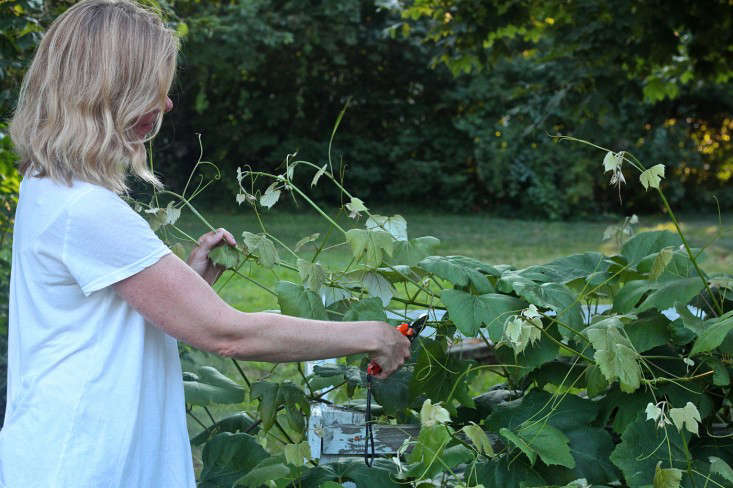Wild Grape, Vitis spp.: “Forager’s Delight”
While the domesticated grape is more familiar to the palette, wild grape vine—of which there are dozens of species—can be found growing along roadsides, fences, vacant urban lots, river banks, and across tree canopies of forested regions. Among the Vitis species are a few to highlight: V. vinifera subsp. sylvestris (the ancestor of the common grape), Vitis californica (California wild grape), Vitis girdiana (desert wild grape), Vitis riparia (riverbank or frost grape), and Vitis labrusca (fox grape).
Location, taste, and fruit size vary but among wild grape varietals, some things remain the same. For example, birds love them all. They’re a true vine (no trunk) and can grow as tall as many trees, making the fruit accessible only to those who can get to it. Read on for more about this prolific fruit.
Above: A bowl of fresh, foraged Vitis labrusca (fox grape), the variety found in much of the Northeast. “It has that wonderfully musky scent and sweet candied flavor that define the ‘fox’ grapes,” says writer Laura Silverman in her post A Study in Scarlet: Foraging on Cape Cod.
Above: The Concord, Isabella, and Niagra grape are among some of the cultivars of Vitis labrusca. Photograph from A Study in Scarlet: Foraging on Cape Cod.
Cheat Sheet
- Wild grape vine produces small white flowers (that are surprisingly fragrant) and which bloom in early summer to fade into hard, green grapes in mid-summer before ripening to deep hues in late summer.
- While a great food source for birds and small mammals, wild grape can be harvested to make wine, mead, juice, jam, and raisins. (The fruit tastes best after the first frost.) The broad leaves of the vine can also be eaten fresh, blanched, or dried.
- Consider wild grape and all its tendrils for your next flower bouquet. The long vines and clusters of fruit build the perfect base in a low vase for a flower arrangement.
Above: Justine harvests wild grape vines in the early summer when grapes are hard and bright green. For more see Bouquet of the Week: Hydrangeas Gone Wild.
Above: Ripe grapes and colorful grape leaves define an abundant flower arrangement from DIY: Louesa Roebuck’s Wild (and Edible) Bouquets.
Keep It Alive
- If wild grapes are growing nearby, inspire them to grow in a certain sunny spot of the garden by taking cue from gardener John Vivian: build an arch or arbor, pruning the vines and taming them into formation.
- Wild grapes, like their cultivated relatives, produce sweeter and more plentiful harvests if they are well pruned. Each fall, Vivian prunes over 3/4 of each vine and the vines will respond the following year with even bigger clusters of grapes.
- The vine is hearty and can easily overtake trees, growing up to 49 feet high to reach the light above a forest canopy. In the winter, the vines, heavy with ice and snow, can weigh down trees, mutating their shape and inhibiting their growth.
- Control your wild grape vine by attacking it in shaded areas. Since the plant is shade-intolerant, cutting the vine at 1-2 feet above ground will stop its growth and it will eventually die without a direct sun source. If it has ample sunlight, it will find a way to grow.
Above: Wild grape tangled in ivy from Garden Visit: At Home with Rosie Bose of Glendon Hall.
For more on grapes:
- DIY: Grafting Grapes
- Bouquet of the Week: Celebrating Decay for Halloween
- Steal This Look: The Spirit of Provence in a Walled Belgian Garden
Finally, get more ideas on how to plant, grow, and care for various vines and climbers with our Vines & Climbers: A Field Guide.
Additionally, get more ideas on how to successfully plant, grow, and care for wild grape vine with our Wild Grape Vine: A Field Guide.













Have a Question or Comment About This Post?
Join the conversation